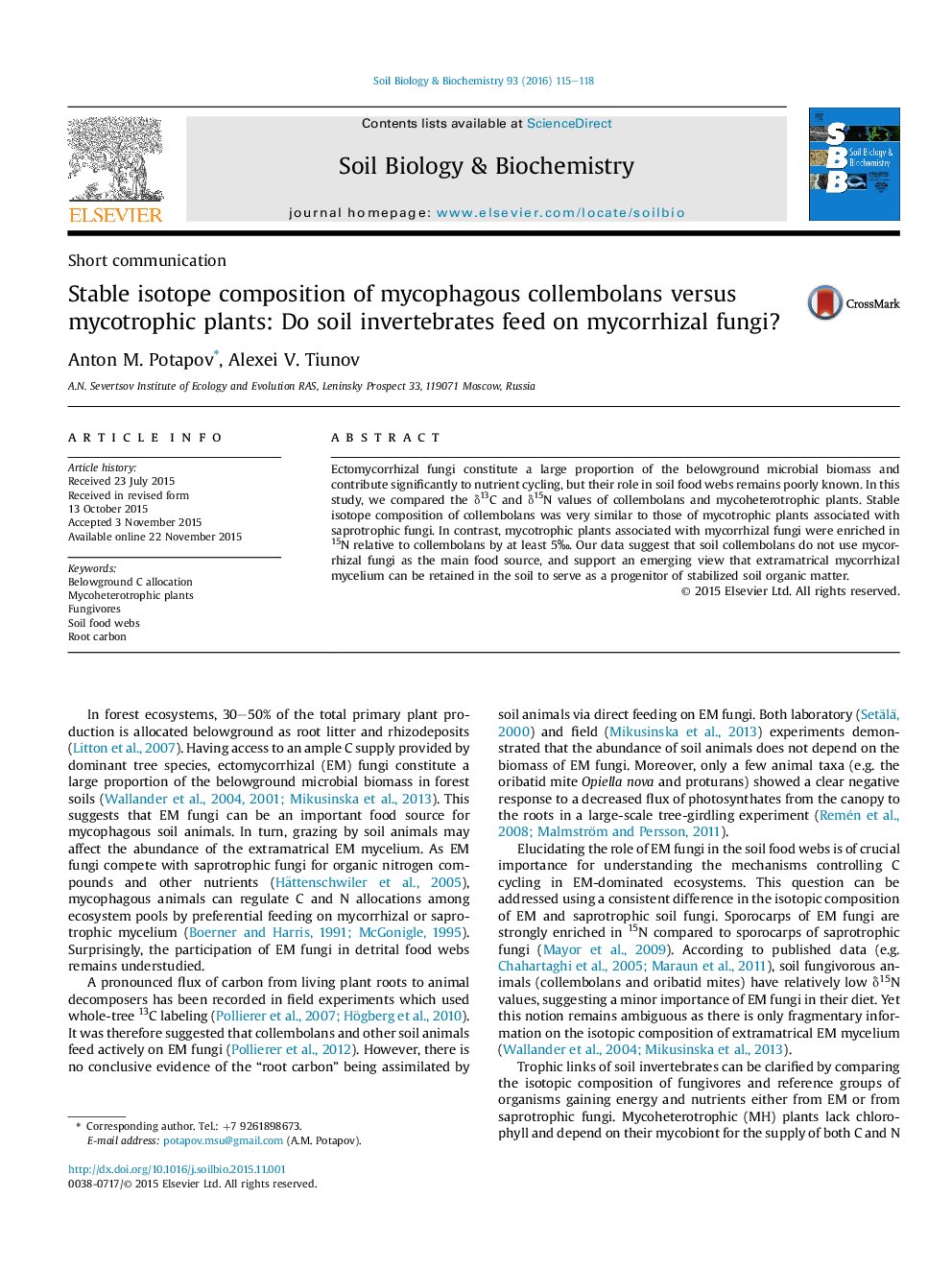| کد مقاله | کد نشریه | سال انتشار | مقاله انگلیسی | نسخه تمام متن |
|---|---|---|---|---|
| 2024250 | 1542591 | 2016 | 4 صفحه PDF | دانلود رایگان |
• The role of mycorrhizal fungi in soil food webs remains understudied.
• We compared δ13C and δ15N values in collembolans and mycoheterotrophic plants.
• Collembolans and plants associated with saprotrophic fungi were similar in δ values.
• Collembola were strongly 15N-depleted relative to plants associated with mycorrhiza.
• Isotopic data indicate that mycophagous arthropods do not feed on mycorrhizal fungi.
Ectomycorrhizal fungi constitute a large proportion of the belowground microbial biomass and contribute significantly to nutrient cycling, but their role in soil food webs remains poorly known. In this study, we compared the δ13C and δ15N values of collembolans and mycoheterotrophic plants. Stable isotope composition of collembolans was very similar to those of mycotrophic plants associated with saprotrophic fungi. In contrast, mycotrophic plants associated with mycorrhizal fungi were enriched in 15N relative to collembolans by at least 5‰. Our data suggest that soil collembolans do not use mycorrhizal fungi as the main food source, and support an emerging view that extramatrical mycorrhizal mycelium can be retained in the soil to serve as a progenitor of stabilized soil organic matter.
Journal: Soil Biology and Biochemistry - Volume 93, February 2016, Pages 115–118
